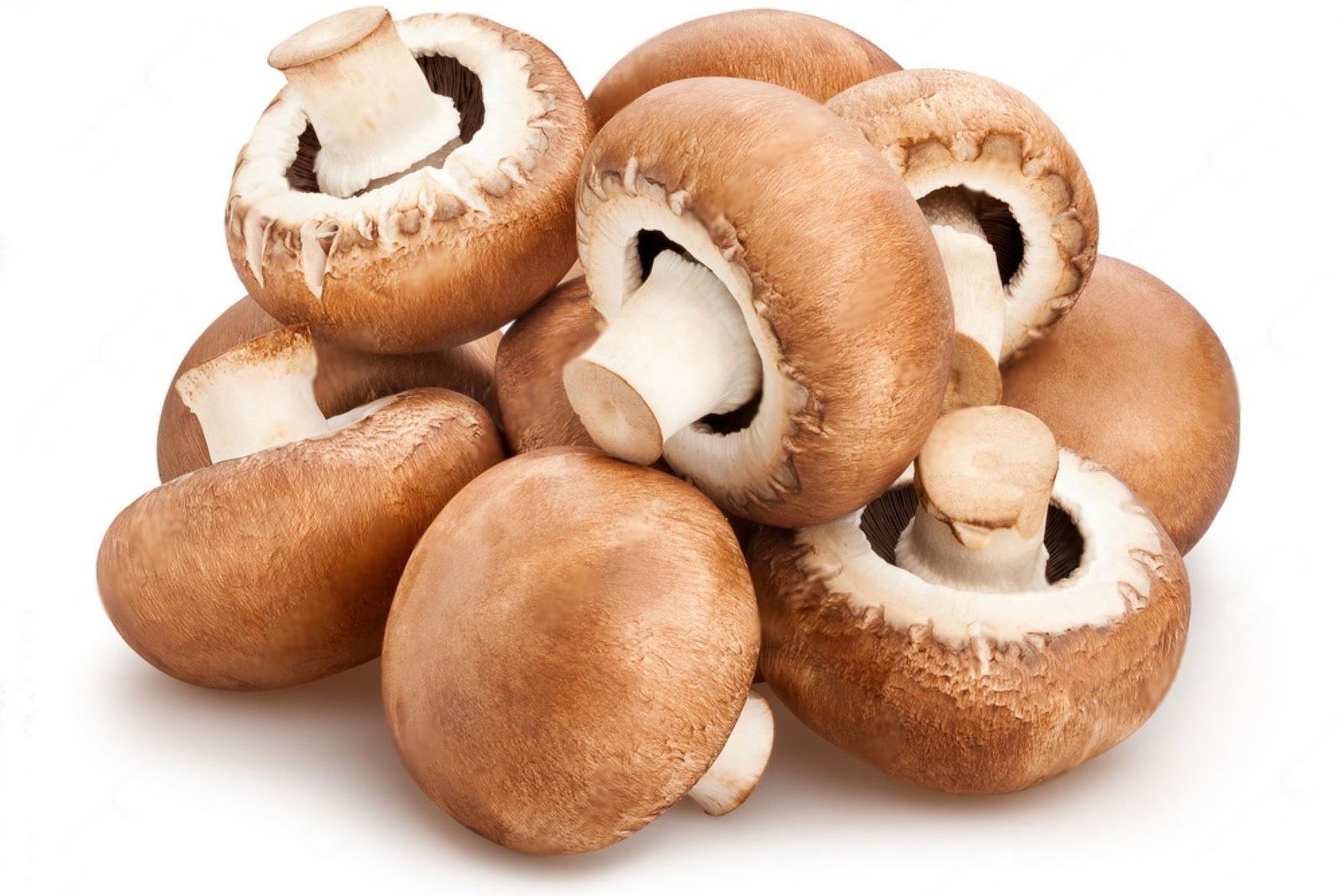
Cremini mushrooms, also known as baby bella mushrooms, are a flavorful and versatile ingredient that adds depth and earthiness to a variety of dishes. With a rich and meaty texture, these mushrooms are a favorite among both mushroom enthusiasts and culinary enthusiasts alike. Whether sautéed, grilled, or used as a topping for pizzas and salads, cremini mushrooms offer a robust flavor that compliments a wide range of cuisines. If you find yourself with an abundance of cremini mushrooms or want to preserve their freshness for future use, freezing is a fantastic option. Freezing cremini mushrooms allows you to extend their shelf life while retaining their flavor and texture, ensuring that you can enjoy the earthy goodness of these mushrooms long after their peak season. In this guide, we will explore the proper techniques for freezing cremini mushrooms, including cleaning, slicing, and packaging methods, so you can have a supply of these delectable fungi ready to enhance your favorite recipes. Join us as we delve into the world of freezing cremini mushrooms and discover the convenience of having these flavorful gems at your fingertips, ready to elevate your culinary creations.
Here are the simple steps to freeze cremini mushrooms:
- Step 1: Select Fresh Cremini Mushrooms
- Step 2: Clean and Trim the Mushrooms
- Step 3: Slice or Leave Whole
- Step 4: Pre-Blanch the Mushrooms
- Step 5: Cool and Drain the Mushrooms
- Step 6: Arrange the Mushrooms to freeze
- Step 7: Flash-Freeze the Mushrooms
- Step 8: Package and Seal the Mushrooms
- Step 9: Label and Date the Packages
- Step 10: Store in the Freezer
Step 1: Select Fresh Cremini Mushrooms
To ensure the best quality when freezing cremini mushrooms, it’s crucial to begin with fresh and high-quality mushrooms. Here’s an explanation of why selecting fresh cremini mushrooms is essential and what characteristics to look for:
- Firmness: Fresh cremini mushrooms should feel firm to the touch. Avoid mushrooms that are soft or spongy, as they may be past their prime and not suitable for freezing. Firm mushrooms will retain their texture and flavor better after freezing.
- Plumpness: Look for cremini mushrooms that appear plump and have a smooth surface. Mushrooms that are shriveled or wrinkled may indicate dehydration or age, and they may not freeze well.
- Blemish-free: Inspect the mushrooms for any blemishes, spots, or discoloration. Fresh cremini mushrooms should have a uniform color and no visible signs of decay. Avoid mushrooms with bruised or damaged areas, as they may deteriorate further during freezing.
- Size: Opt for smaller-sized cremini mushrooms when possible. Smaller mushrooms tend to freeze more evenly and quickly compared to larger ones. Uniformly sized mushrooms will also make portioning and cooking more convenient later on.
By selecting fresh cremini mushrooms, you set the foundation for delicious and high-quality frozen mushrooms. Remember to handle them with care and choose the best ones available to ensure optimal results in the freezing process.
Step 2: Clean and Trim the Mushrooms
Cleaning the cremini mushrooms thoroughly before freezing is important to remove any dirt, debris, or potential contaminants. Here’s an explanation of the recommended cleaning process:
- Gentle wiping: Take a damp cloth or paper towel and gently wipe the surface of each cremini mushroom. This helps remove any visible dirt or debris that may be clinging to the mushrooms. Wiping instead of rinsing prevents the mushrooms from absorbing excess moisture, which can result in a mushy texture when frozen.
- Avoid washing under running water: It’s best to avoid washing cremini mushrooms under running water. Mushrooms are porous and can absorb water easily, which can lead to a loss of texture and flavor. Rinsing mushrooms under water can make them soggy and affect their overall quality when frozen.
- Trim woody stems (optional): If desired, trim the woody ends of the cremini mushroom stems. These ends can be tough and chewy, so removing them can enhance the overall eating experience. Use a sharp knife to carefully trim off the tough parts, but be mindful not to remove too much of the stem, as it adds flavor and texture to the mushrooms.
By gently wiping the cremini mushrooms with a damp cloth or paper towel, you effectively remove surface dirt while minimizing the absorption of excess moisture. This cleaning method helps maintain the mushrooms’ integrity and ensures that they freeze well without losing their desired texture or flavor. Additionally, trimming the woody stems can improve the overall eating quality of the mushrooms, but it is optional based on personal preference.
Step 3: Slice or Leave Whole
When freezing cremini mushrooms, you have the option to either freeze them whole or slice them. The choice between slicing and leaving them whole depends on your future cooking preferences and the desired texture in your dishes. Here’s an explanation of the considerations for each option:
- Slicing for convenience:
If you anticipate using the cremini mushrooms in dishes that require smaller pieces or more even cooking, slicing them before freezing is a good option. Sliced mushrooms allow for easier portioning and can be added directly to recipes without the need for further preparation. They also tend to cook more quickly due to their smaller size.
- Whole for shape and texture:
Keeping the cremini mushrooms whole before freezing preserves their natural shape and texture. This is particularly desirable if you plan to use them in dishes where their appearance and texture are important, such as sautés, stuffed mushrooms, or as a side dish. Whole mushrooms retain their structure better and can provide a satisfying bite in these preparations.
Consider your cooking preferences and the specific recipes you have in mind when deciding whether to slice or leave the cremini mushrooms whole before freezing. Keep in mind that sliced mushrooms offer convenience and quicker cooking, while whole mushrooms maintain their shape and texture for certain dishes. Whichever option you choose, freezing cremini mushrooms allows you to have them readily available and preserved for future culinary creations.
Step 4: Pre-Blanch the Mushrooms
Blanching the cremini mushrooms before freezing is an important step that helps preserve their color, texture, flavor, and also ensures food safety. Here’s an explanation of why pre-blanching is recommended and how to do it:
- Preservation of color, texture, and flavor: Blanching involves briefly immersing the mushrooms in boiling water, which helps to deactivate enzymes and preserve the natural color, texture, and flavor of the mushrooms. This step helps prevent the mushrooms from becoming discolored or developing off flavors during freezing and storage.
- Water blanching method: Fill a large pot with water and bring it to a rolling boil. The pot should be large enough to accommodate the mushrooms without overcrowding. Boiling water blanches the mushrooms quickly and effectively.
- Adding the mushrooms: Carefully add the cremini mushrooms to the boiling water. To prevent overcrowding, you may need to blanch them in batches. The mushrooms should be fully submerged in the boiling water for even blanching.
- Blanche for 2 minutes: Allow the mushrooms to blanch in the boiling water for approximately 2 minutes. This duration is sufficient to deactivate enzymes and retain their quality without overcooking them.
- Surface bacteria removal: Blanching also helps eliminate any potential surface bacteria on the mushrooms, ensuring food safety. The high temperature of boiling water helps kill bacteria or other microorganisms that might be present.
Blanching is a simple yet essential step that helps maintain the quality and safety of the cremini mushrooms during freezing and storage.
Step 5: Cool and Drain the Mushrooms
After blanching the cremini mushrooms, it is crucial to cool them down quickly to halt the cooking process and prevent them from becoming overcooked. Here’s an explanation of the recommended cooling and draining process:
- Ice bath to stop cooking: Prepare a bowl or basin filled with cold water and ice cubes. Immediately after blanching, transfer the mushrooms from the boiling water and submerge them in the ice bath. The cold water rapidly lowers their temperature, stopping the cooking process. This step helps retain the mushrooms’ desired texture and prevents them from becoming mushy.
- Allow cooling time: Let the cremini mushrooms sit in the ice bath for a few minutes to ensure they cool down completely. This cooling period helps lock in their flavor, color, and texture, as well as preventing any carryover cooking.
- Drain thoroughly: Once the mushrooms have cooled, carefully remove them from the ice bath. Allow them to drain thoroughly to eliminate excess moisture. You can use a colander or a sieve to ensure efficient draining. This step helps prevent ice crystals from forming during freezing and reduces the risk of freezer burn.
- Pat dry: Gently pat the cremini mushrooms dry with a clean kitchen towel or paper towels. Removing excess moisture further helps prevent the formation of ice crystals and maintains the quality of the mushrooms during freezing.
By cooling and draining the cremini mushrooms properly, you ensure that they retain their desired texture and flavor. The ice bath and subsequent draining remove excess heat and moisture, preventing overcooking and potential issues during freezing. Taking these steps contributes to the overall quality and preservation of the mushrooms for future use.
Step 6: Arrange the Mushrooms to freeze
Properly arranging the cremini mushrooms before freezing helps prevent them from sticking together and allows for easy portioning when needed. Here’s an explanation of how to arrange the mushrooms for optimal freezing:
- Use a baking sheet or tray: Select a baking sheet or tray that is large enough to accommodate the mushrooms in a single layer without overcrowding. It’s important to choose a sheet or tray that fits in your freezer.
- Line with parchment paper: Line the baking sheet or tray with parchment paper. This prevents the mushrooms from sticking to the surface and makes it easier to remove them after freezing.
- Single layer placement: Spread the cremini mushrooms in a single layer on the parchment-lined baking sheet or tray. Ensure that there is enough space between each mushroom so that they are not touching or overlapping. This prevents them from freezing together in clumps.
- Avoid overcrowding: It’s important not to overcrowd the mushrooms on the tray. Leave some space around each mushroom to allow for even freezing. If necessary, use multiple trays or freeze in batches to maintain a single layer and prevent clumping.
By arranging the cremini mushrooms in a single layer with space between them, you ensure that they freeze individually and don’t stick together. This allows for easy portioning and prevents the need to thaw more than required when using them in recipes. Properly arranged mushrooms on a baking sheet or tray contribute to an organized and efficient freezing process.
Step 7: Flash-Freeze the Mushrooms
Flash-freezing the cremini mushrooms individually is a crucial step to prevent them from clumping together and to maintain their individuality during freezing. Here’s an explanation of the flash-freezing process:
- Transfer the tray to the freezer: Carefully place the baking sheet or tray with the arranged cremini mushrooms in the freezer. Ensure that it is positioned on a flat surface to prevent any spills or shifting of the mushrooms.
- Flash-freezing for individual freezing: Flash-freezing involves quickly freezing the mushrooms at a very low temperature. This process helps freeze each mushroom individually, preventing them from sticking together and forming clumps. It also facilitates easy portioning later on.
- Freezing duration: Allow the cremini mushrooms to freeze for about 2 to 3 hours, or until they are completely frozen. The exact freezing time may vary depending on the size and thickness of the mushrooms as well as the temperature of your freezer. Ensure that the mushrooms are frozen solid before proceeding to the next step.
By flash-freezing the mushrooms, you ensure that each mushroom freezes individually, preventing them from clumping together. This makes it easier to remove the desired amount of mushrooms from the freezer without thawing more than necessary. Proper flash-freezing guarantees the preservation of their quality and allows for convenient portioning in future recipes.
Step 8: Package and Seal the Mushrooms
Proper packaging and sealing of the frozen cremini mushrooms are essential to maintain their quality, prevent freezer burn, and ensure long-term preservation. Here’s an explanation of how to package and seal the mushrooms effectively:
- Choose airtight freezer bags or containers: Select high-quality freezer bags or containers specifically designed for freezing food. These should be durable, leak-proof, and airtight to provide the best protection for the mushrooms.
- Transfer the frozen mushrooms: Carefully transfer the frozen cremini mushrooms from the baking sheet or tray into the chosen freezer bags or containers. It’s important to work quickly to minimize thawing.
- Remove excess air: Squeeze out as much air as possible from the bags or containers before sealing them. This step helps prevent freezer burn, which can occur when air comes into contact with the frozen mushrooms. Removing excess air also helps maintain the quality and texture of the mushrooms during storage.
- Seal tightly: Ensure that the bags or containers are tightly sealed to create a secure barrier against air and moisture. Double-check the seals to make sure they are completely closed and there are no gaps or openings.
By packaging the cremini mushrooms in airtight freezer bags or containers and removing excess air, you create a protective environment that minimizes the risk of freezer burn. This step helps maintain the mushrooms’ quality, flavor, and texture over an extended period of time. Proper packaging and sealing are vital to preserving the frozen mushrooms and ensuring they remain in optimal condition until you’re ready to use them.
Step 9: Label and Date the Packages
Labeling and dating the packages of frozen cremini mushrooms is an important step to maintain organization and track their freshness. Here’s an explanation of why labeling and dating are crucial:
- Content identification: Clearly label each package with the contents, in this case, “Cremini Mushrooms.” This makes it easy to identify the package without needing to open it or rely on visual inspection alone. It helps you quickly find the specific ingredient you need for your recipes.
- Date of freezing: It’s essential to note the date when the mushrooms were frozen on the package. This information allows you to keep track of how long they have been stored in the freezer. By knowing the freezing date, you can prioritize the older packages first to ensure you use the mushrooms in a timely manner.
- Rotation and freshness: Labeling and dating the packages enables proper rotation of the mushrooms. By using the oldest frozen mushrooms first, you ensure that none of them remain in the freezer for an extended period, potentially losing quality or flavor over time. It helps maintain a stock of fresh and properly rotated ingredients.
- Easy inventory management: Labeling and dating the packages also contribute to efficient inventory management. You can easily track the quantity of frozen mushrooms you have on hand, allowing you to plan your meals and shopping accordingly. It helps avoid wastage and ensures you have enough supply for your culinary needs.
By labeling and dating the packages of frozen cremini mushrooms, you create a system that promotes organization, freshness, and efficient usage. This step helps you stay organized in the freezer and ensures that you prioritize the oldest mushrooms first, resulting in a better culinary experience when using them in your recipes.
Step 10: Store in the Freezer
After properly packaging and labeling the frozen cremini mushroom packages, it’s important to store them correctly in the freezer. Here’s an explanation of the recommended storage practices:
- Freezer temperature: Ensure that your freezer is set to a temperature of 0°F (-18°C) or below. This temperature range is ideal for freezing food and helps maintain the quality and safety of the cremini mushrooms over an extended period.
- Proper placement: Place the labeled packages of cremini mushrooms in a designated area of the freezer where they won’t be disturbed or crushed by other items. It’s important to maintain the integrity of the packages and prevent any damage that could affect the mushrooms’ quality.
- Avoid temperature fluctuations: Minimize temperature fluctuations by keeping the freezer door closed as much as possible. Fluctuating temperatures can affect the overall quality and texture of the mushrooms, leading to potential freezer burn or loss of flavor.
- Storage duration: Properly stored cremini mushrooms can last in the freezer for approximately 10 to 12 months without significant loss of quality. However, for the best flavor and texture, it’s recommended to use them within 6 to 9 months.
By storing the labeled packages of cremini mushrooms in a freezer set at the appropriate temperature, you ensure optimal preservation and extend their shelf life. Following these storage guidelines allows you to enjoy the mushrooms’ quality and flavors for an extended period, giving you the flexibility to use them whenever needed.
Other related questions
How do you defrost cremini mushrooms?
There are two primary methods to defrost cremini mushrooms: in the refrigerator or using the microwave. To defrost in the refrigerator, transfer the frozen mushrooms to a plate or container and let them thaw slowly for several hours or overnight. Alternatively, for a quicker method, place the frozen mushrooms in a microwave-safe dish, cover them, and defrost them using the microwave’s defrost setting in short intervals, stirring occasionally until thawed.
Can you refreeze cremini mushrooms?
It is generally not recommended to refreeze cremini mushrooms once they have been thawed. Freezing and thawing mushrooms can affect their texture and quality, and repeated thawing and refreezing can further deteriorate their flavor and structure. It is best to use the thawed cremini mushrooms promptly or cook them before freezing to maintain their taste and texture.
How do I know if the cremini mushrooms have gone bad after being frozen?
To determine if frozen cremini mushrooms have gone bad, there are a few signs to look for. First, check for any noticeable changes in texture, such as mushiness or excessive wateriness. Next, inspect the mushrooms for any signs of discoloration, such as browning or dark spots. Lastly, if you detect an off or unpleasant odor coming from the mushrooms, it is a strong indication that they have spoiled and should be discarded.
Can you freeze cremini mushrooms with added seasoning or herbs?
Yes, you can freeze cremini mushrooms with added seasoning or herbs. The added seasoning or herbs can enhance the flavor of the mushrooms and provide a delicious taste when they are thawed and cooked. To freeze cremini mushrooms with seasoning or herbs, clean and slice them as desired. Toss the mushrooms with your preferred seasonings or herbs, ensuring they are evenly coated. Then, arrange the seasoned mushrooms in a single layer on a baking sheet and place them in the freezer until firm.
Can you freeze cremini mushrooms with added oil or butter?
While you can freeze cremini mushrooms with added oil or butter, it’s important to note that the texture and consistency of the oil or butter may change after freezing and thawing. Freezing can cause the oil or butter to solidify and separate from the mushrooms, resulting in a different texture. If you prefer to freeze cremini mushrooms with added oil or butter, it’s best to lightly sauté or cook the mushrooms with the oil or butter before freezing. Allow the cooked mushrooms to cool completely before transferring them to freezer-safe containers or bags.
Can you freeze cremini mushrooms for pickling or preserving?
It is generally not recommended to freeze cremini mushrooms for pickling or preserving purposes. Freezing can significantly change the texture of the mushrooms, making them softer and potentially less suitable for pickling or preserving. The process of freezing and thawing can also cause the mushrooms to release moisture, which can affect the overall quality and integrity of the pickling or preserving process. It is best to focus on pickling or preserving fresh cremini mushrooms using traditional methods that do not involve freezing.
Can you freeze cremini mushrooms with a browned or caramelized surface?
Yes, you can freeze cremini mushrooms with a browned or caramelized surface. The browning or caramelization adds flavor and depth to the mushrooms, which can be preserved through freezing. After browning or caramelizing the mushrooms, allow them to cool completely. Then, transfer them to freezer-safe containers or bags, ensuring they are properly sealed.








